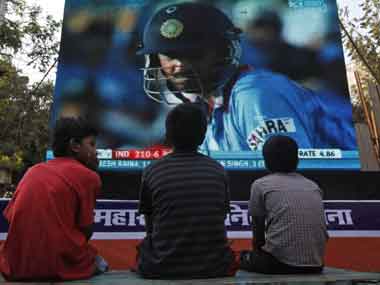The Standards of Quality of Service (Duration of Advertisements in Television Channels) (Amendment) Regulations, 2013 have been published and come into effect as soon as they are published in the official gazette.
“How often do you get irritated with a commercial break interrupting the film you’re watching just at the moment it got exciting? How irritated do you get when the frame of the programme you’re watching shrinks as it gets ‘surrounded’ by a frame that sends out a commercial message? Hey, why is there another ad break? Didn’t we just see one? Why are the commercials so LOUD that you jump for the remote control as the ad break begins, and raise the volume as the TV programme begins? Thanks to the ads, a two-hour movie becomes a three-hour viewer experience - is that fair?,” Firstpost had written in an article that reported TRAI’s move to restrict the advertising time on TV channels in India.
[caption id=“attachment_674239” align=“alignleft” width=“380”]
 Reuters[/caption]
Reuters[/caption]
Now it’s real. The TRAI has effectively curtailed the number of ads on a channel (and ads include commercials that promote other programmes on a channel) to 12 minutes.
“No broadcaster shall, in its broadcast of a programme, carry advertisements exceeding twelve minutes in a clock hour.” Explanation: The clock hour means a period of sixty minutes commencing from 00.00 of an hour and ending at 00.60 of that hour. (example: 14.00 to 15.00 hours)," says the TRAI notification.
While TV channels may gripe and complain, the beneficiaries of such regulation are the ones that, rightly, TRAI should be most concerned about - the viewers, the consumers. What this regulation means, simply, is that a 2 hour movie, if it begins at the top of a clock hour, can become 2 hours and 36 minutes (if the broadcaster consumes all 12 minutes in hours 1 and 2, and the full 12 minutes allowed in the 3rd hour in the 36 minutes of the hour).
So get ready to watch your favourite blockbuster. Now it’ll be as entertaining as it ever was - and much, much shorter.
Anant Rangaswami was, until recently, the editor of Campaign India magazine, of which Anant was also the founding editor. Campaign India is now arguably India's most respected publication in the advertising and media space. Anant has over 20 years experience in media and advertising. He began in Madras, for STAR TV, moving on as Regional Manager, South for Sony’s SET and finally as Chief Manager at BCCL’s Times Television and Times FM. He then moved to advertising, rising to the post of Associate Vice President at TBWA India. Anant then made the leap into journalism, taking over as editor of what is now Campaign India's competitive publication, Impact. Anant teaches regularly and is a prolific blogger and author of Watching from the sidelines.
)